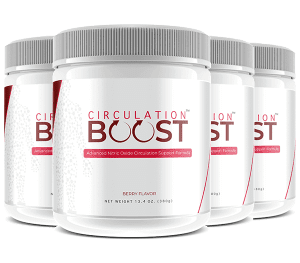Having a healthy circulatory system is essential for good health. If you’re experiencing slow blood flow, what can you do about it? Find out.
Vincent Varghese, D.O., a cardiac interventionist at Deborah Heart and Lung Center in New Jersey, explains the importance of good circulation: “When plaque or arterial blockages develop, normal blood flow is hindered and can lead to devastating effects, such as heart attack, stroke, or even leg amputation [in severe cases].”
If you’re looking to improve your circulation, follow the guidelines below.
Walking
Whether it’s running, biking, or simply walking, getting regular aerobic exercise can benefit your arteries and veins. Aim for 150 minutes of moderate-intensity workouts per week or start smaller and gradually build up your routine.
Taking Breaks
By taking more frequent breaks, you allow your body to move positions as well as decrease your stress levels. Remaining in one position for too long can be detrimental to your circulation, so make sure you take breaks.
Fruits and Vegetables
 If you want to reduce your risk of high blood pressure, plaque formation, and diabetes, eating fruits and vegetables helps. Moreover, foods rich in nitric oxides such as beets, spinach, and kale can boost your circulation.
If you want to reduce your risk of high blood pressure, plaque formation, and diabetes, eating fruits and vegetables helps. Moreover, foods rich in nitric oxides such as beets, spinach, and kale can boost your circulation.
Hydration
Dehydration leads to less circulation while also retaining more sodium, resulting in thick blood that doesn’t flow as well. To avoid this, simply drink enough water throughout the day; if your pee isn’t straw-colored or clear, you need more water.
Smoking
Avoid smoking at all costs, as it can lead to plaque buildup in your arteries that results in peripheral artery disease. However, the benefits of quitting smoking can be seen as soon as the next day, so focus on quitting now.
Blood Pressure Management
If you have high blood pressure (hypertension), it’s important that you manage it properly or it can seriously impact circulation. For example, the longer it goes untreated, the more it creates tears in your artery walls, leading to plaque buildup.
Blood Sugar Control
In addition to blood pressure, you need to control your blood sugar, as high levels can damage blood vessels. Furthermore, diabetes can result in plaque formation, increasing your risk of PAD and other circulatory issues.
Compression Socks
By wearing compression socks from morning to evening, they will steadily squeeze your legs to get blood moving. You can get the over-the-counter or get the prescription-strength kind if you currently have varicose veins.
 The Outlook
The Outlook
Having poor circulation can be a symptom of an underlying condition or a result of other factors. However, there are things you can do to improve your blood flow such as exercise, staying hydrated, and more.
For example, if you want an extra boost, you can take daily supplements like Circulation Boost to promote your blood flow. Its ingredients help your body naturally improve its circulation by boosting nitric oxide production. Try Circulation Boost as part of a plan to promote your blood flow and overall heart health.

